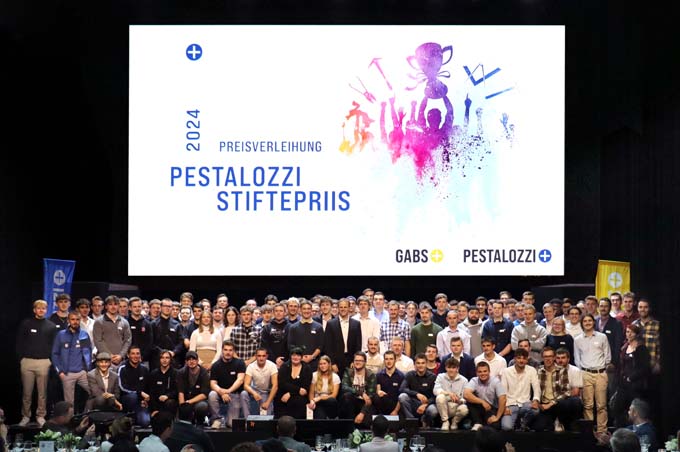Myth Burnout Syndrome? How sick change really makes you
Employees can only help themselves to a very limited extent when they are overtaxed. That's why companies need to support their employees and keep the stress in everyday work as low as possible. This can only be achieved by adapting structures and rules to the agile working world. Read Dr. Consuela Utsch's article about the options available to bosses to prevent their employees from suffering burnout.

An important call from abroad, preparing for a meeting at the same time, three requests from colleagues on the side and then a full inbox: a scenario that is finding its way into all kinds of industries around the world and is significantly increasing stress levels. The world of work has undergone lasting change over the last ten years - with digitization, the demands are growing not only on companies, but also on their employees. Multitasking is in demand in almost all industries. More and more information is pouring in on employees in ever shorter periods of time. This, along with constant availability and a high noise level in open-plan offices, leads in the long term to inefficiency, slowed processes and, in the worst case, to illness. When the pressure at work becomes too great and employees no longer feel up to their tasks, suffer from anxiety, can no longer sleep and are less productive, the diagnosis inevitably usually follows: burnout syndrome. Employees can only help themselves to a very limited extent when they are overtaxed. That's why companies need to support their employees and keep the stress in everyday work as low as possible. This can only be achieved by adapting structures and rules to the agile working world. What options do bosses have to prevent their employees from developing burnout syndrome?
Too many disruptions and deadline pressure can cause burnout syndrome
According to a study by the Techniker Krankenkasse health insurance fund in Germany, work is considered the number one stress factor. In addition, the respondents perceive stress and pressure as constantly increasing factors. This also has negative consequences for the quality of work: Those who barely manage to work through their daily to-do list usually have no time for creative thinking or strategic considerations. Instead of keeping an eye on the big picture, employees get lost in the details. Deadline pressure and a fast pace of work stress six out of ten professionals, and interruptions and disruptions are a burden on every second person (1). In addition, the permanent flood of information from inside and outside the company impairs the work process. In times of digitalization and e-mail-based communication, more and more information is pouring in on employees in ever shorter periods of time. More and more tasks have to be perceived, classified and completed at the same time. As a result, employees often jump from one role to another in their day-to-day work. The constant interruptions caused by e-mails, telephone calls and personal addresses lead to inefficiency and a permanent feeling of being overwhelmed. Each employee is interrupted up to 27 times a day, according to the results of a study (2). For each interruption in a work process, the employee needs an average of 15 to 20 minutes to fully concentrate on the original task again. This leads to stress, poor concentration and an increased susceptibility to illnesses such as burnout syndrome and depression. To prevent this mental strain from affecting work and health, the cause of stress must be treated. A recent study by the Swedish University of Linköping (3) showed that the human brain is not designed to process several things at the same time with the same concentration. According to this study, the brain always focuses on the most important task at hand. Only the processing of individual tasks one after the other turned out to be really effective and productive.
Casting is the trump card
To reduce the psychological workload of employees, the company management must take preventive measures. One possibility is regular external or internal analysis of employee workload. In addition, a role-based approach helps to counteract the permanent flood of information and the associated stress. With the help of a clear distribution of roles and communication agreements, each employee knows, for example, when which colleague is currently performing which task. The employee himself also communicates his own tasks to colleagues via the tool used in the role-based approach. Setting time windows for the respective task is one of the elementary requirements, whereby the employee can convey the wish not to be disturbed while working on the task. In this way, each work colleague also knows when the other team members are available and when they are not. Nevertheless, in times of digitalization, the department must remain open to requests from outside and inside. At the same time, the method provides transparency regarding the workload of the individual employee so that the team leader can intervene in a controlling and regulating manner. The lack of interruptions leads to greater efficiency and ultimately also increases productivity in the company. In addition, role-based work offers freedom for innovative ideas and creativity through appropriately set phases. Employees are thus involved in the company and feel empowered to participate in the development of the business.
Role models in demand
Healthy, satisfied employees are the key to a successful company: The management level should already take preventive measures to protect its employees and at the same time maintain and expand the economic strength of the company. Ideally, management should regularly check the actual workload of individual employees and, if necessary, have a service provider additionally assess the situation from an unbiased outside perspective. Multitasking and excessive demands should always be replaced by clearly defined goals and the best possible focus. The framework conditions that have been established must be adopted for the organization as a whole. They affect both the employees and the management level of the company. Here, the management level must live up to its role model function. This can only be achieved if managers actively live the concept and are thus able to mentally carry the workforce along with them. After all, it is not only companies that need a clear focus and achievable objectives - individual employees do too. The management level alone is capable of fundamentally influencing the performance culture in the respective company: Realistic work goals and a clear distribution of roles create a better, healthier working environment.
Taking individuality into account
Companies are required to actively address the digital challenges and the accompanying impact on the workforce and the world of work. A structured distribution of roles offers employees effective and low-stress working and general conditions. In the long term, this pays off in higher efficiency, increased productivity, quality, and protected employee health. Especially in times of a shortage of skilled workers, every company depends on a motivated and healthy workforce. Nevertheless, when adapting the framework, companies should keep in mind that every individual deals differently with stress, growing challenges and multitasking. Therefore, the framework for the overall organization must be adapted individually at the department and team level. The wheel of digitization cannot be turned back - companies must adapt to the new conditions and protect their employees from the negative changes.
Notes/cited sources:
(1) https://www.tk.de/resource/blob/2026630/9154e4c71766c410dc859916aa798217/tk-stressstudie-2016-data.pdf
(2) Cornelius J. König / Martin Kleinmann / Wilfried Höhmann: "A field test of the quiet hour as a time management technique", Source: Saarland University, 2013.
(3) http://journal.frontiersin.org/article/10.3389/fnhum.2016.00221/full
About the author:

Dr. Consuela Utsch is Managing Director and founder of Acuroc GmbH and AQRO GmbH. As a specialist, she has been advising medium-sized companies and large-scale industry for more than 25 years on the implementation of operational and project management processes, as well as on all topics related to IT governance and the sustainable implementation of digital transformation and the associated change management. Dr. Utsch holds a worldwide patent on her method and is the author of the reference book "AQRO - Stress-free and Efficient Human Resource Management". For more information about Acuroc GmbH and about AQRO GmbH, visit www.acuroc.de and www.aqro.eu.









